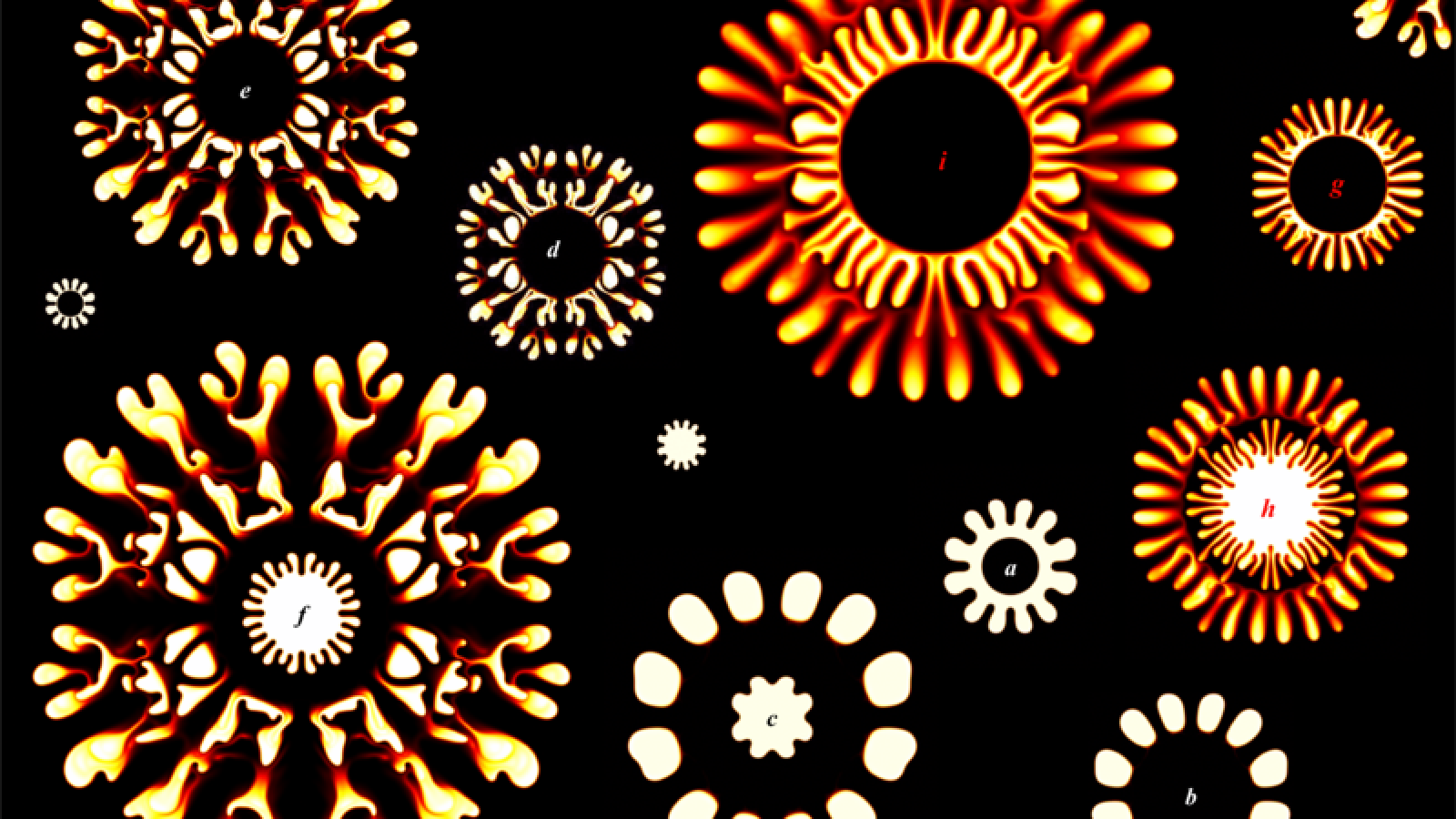
Trippy liquid ‘fireworks’ appear when scientists try to mix unmixable fluids
How did your country report this? Share your view in the comments.
Diverging Reports Breakdown
Trippy liquid ‘fireworks’ appear when scientists try to mix unmixable fluids
Computer simulations show how fluids that don’t want to mix can create “fireworks” “Fireworks” are caused by Saffman-Taylor instability, a phenomenon that occurs when two immiscible fluids with different viscosities are confined in a small space. Understanding this phenomenon is important for storing carbon from the atmosphere in the ground, a strategy for tackling climate change. Carbon dioxide is responsible for about 80% of all greenhouse gases since 1990, but it still has to go somewhere. Storing carbon dioxide in the Ground involves “injecting” carbon dioxide into a more viscous liquid (water)
Researchers mapped out how two immiscible fluids (two fluids that do not mix, like oil and water) with different viscosities can create “fingers” when they interact. They created different patterns by alternately injecting the fluids at the center of each “firework,” allowing the fluids to spread out.
Studying this phenomenon is important for storing carbon from the atmosphere in the ground, a strategy for tackling climate change. Carbon dioxide is responsible for about 80% of all heating from human-caused greenhouse gases since 1990. Removing large amounts of carbon dioxide from the atmosphere is possible, but it still has to go somewhere. Storing it in the ground is one option — and understanding fluid interactions can help us figure out how to do that.
In this case, the word “fluid” can refer to both gases and liquids, including gaseous carbon dioxide. Viscosity is a measure of how easily a fluid moves. Fluids with high viscosity move sluggishly, like molasses or tar, while low-viscosity fluids move faster and can spread out more, like water or air.
The fluid “fireworks” are caused by Saffman-Taylor instability — a phenomenon that occurs when two immiscible fluids with different viscosities are confined in a small space. When a less viscous fluid is added to the system, there aren’t a lot of places for it to go, so it pushes against the thicker fluid instead — forming the distinctive patterns.
An example of Saffman-Taylor instability causing complex patterns in a thin film. (Image credit: Claire Trease)
If you’ve ever put a drop of glue between two flat surfaces, then changed your mind and pulled them apart, you might have noticed the wet glue forming strange ridges and channels. This is Saffman-Taylor instability in action. When you pulled the pieces apart, air tried to go where the more viscous glue was and left those patterns behind.
Related: Why does nearly all life breathe oxygen?
Sign up for the Live Science daily newsletter now Get the world’s most fascinating discoveries delivered straight to your inbox. Contact me with news and offers from other Future brands Receive email from us on behalf of our trusted partners or sponsors
Storing carbon dioxide in the ground involves “injecting” carbon dioxide gas into a more viscous liquid (water) in confined spaces underground, leading to Saffman-Taylor instability. The “fireworks” from the paper show that the number and extent of the fingers can be changed depending on when and how the fluid is injected into the system. Increasing the fingering effect helps keep the gas from escaping back into the atmosphere.
